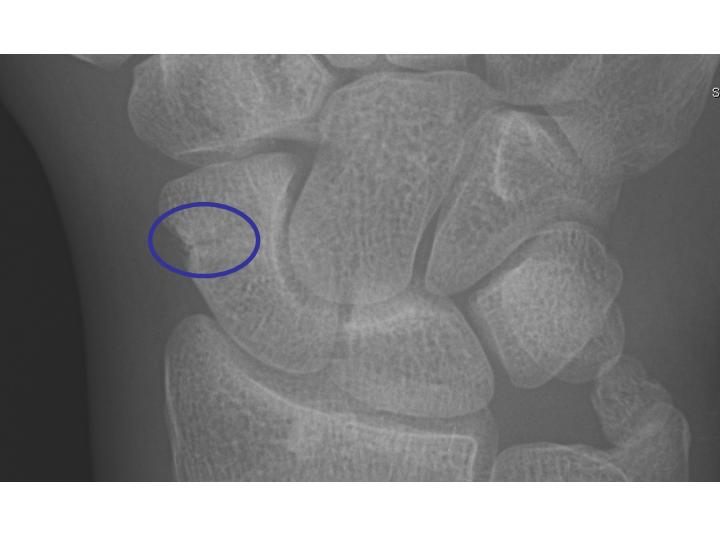Wrist Case 1 ED Management
Scaphoid fracture
ED Management

Blood supply to the scaphoid is derived from a branch of the radial artery that courses distal to proximal. Therefore, the fractured scaphoid bone is subject to high rates of nonunion (5-10% of fractures) and avascular necrosis (3%) due to poor blood supply to the proximal pole of the bone. These complications occur more frequently when diagnosis is delayed. For this reason, even if radiographic evidence is lacking, suspected fractures should be managed in the same manner as documented fractures.
Emergency department treatment includes placement in a short-arm thumb spica splint with the wrist slightly radially deviated and in a neutral position with regard to flexion. Follow up with a hand surgeon should take place in 10-14 days for repeat x-rays. For documented nondisplaced fractures, the patient can expect to remain casted for 6-8 weeks. For displaced or highly comminuted fractures, the patient should be splinted as above and expect to undergo internal fixation to prevent non-union.